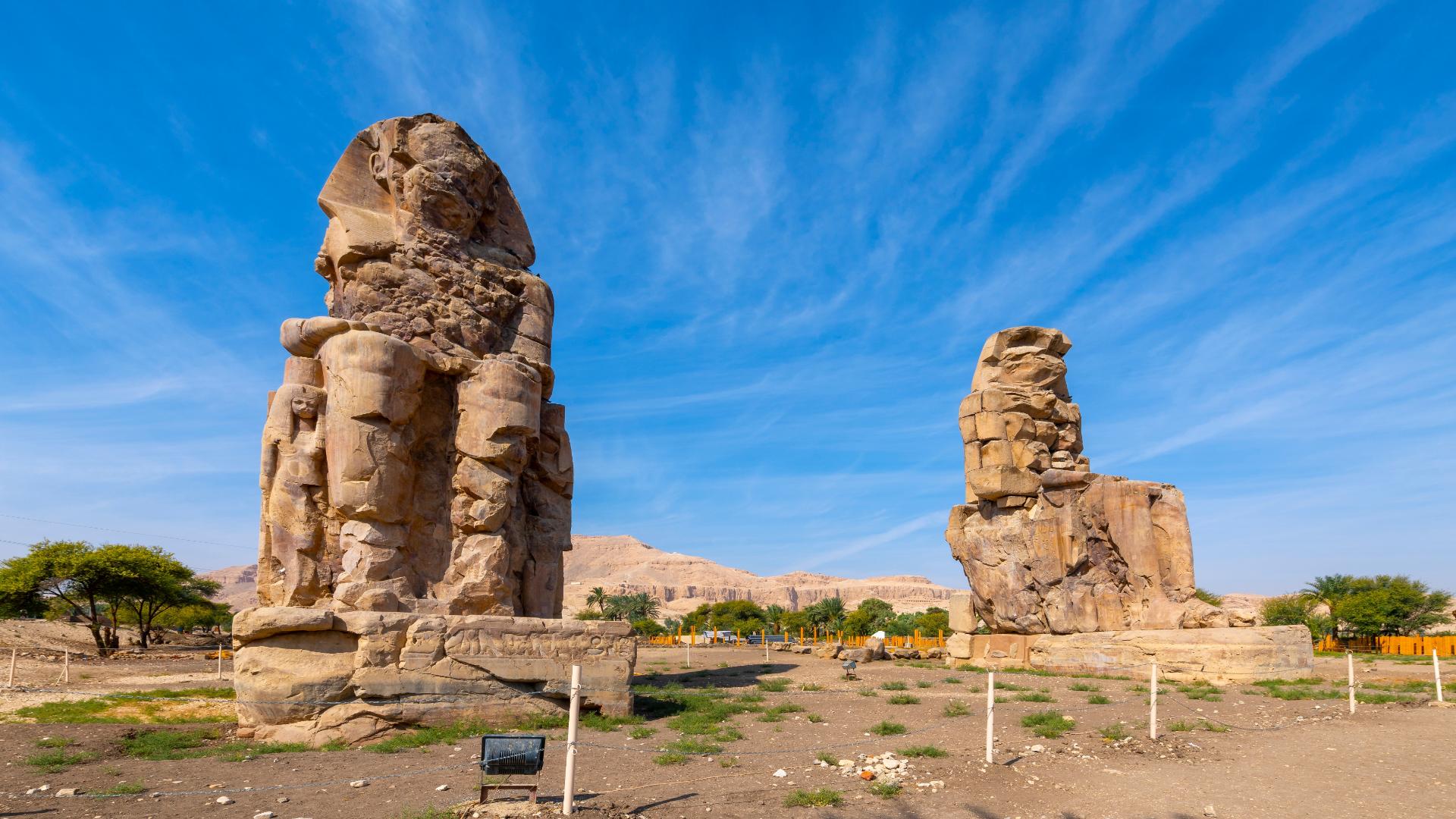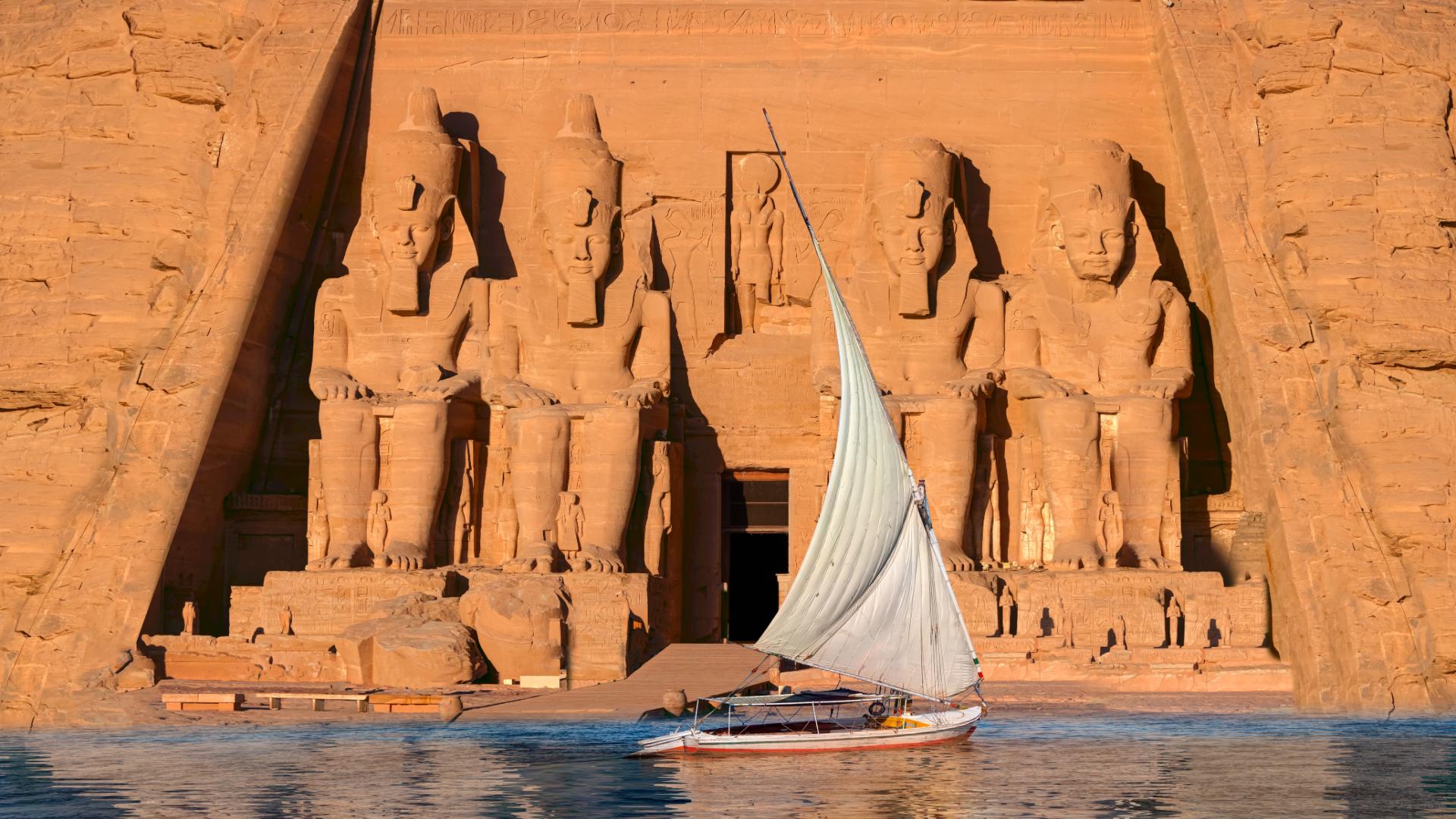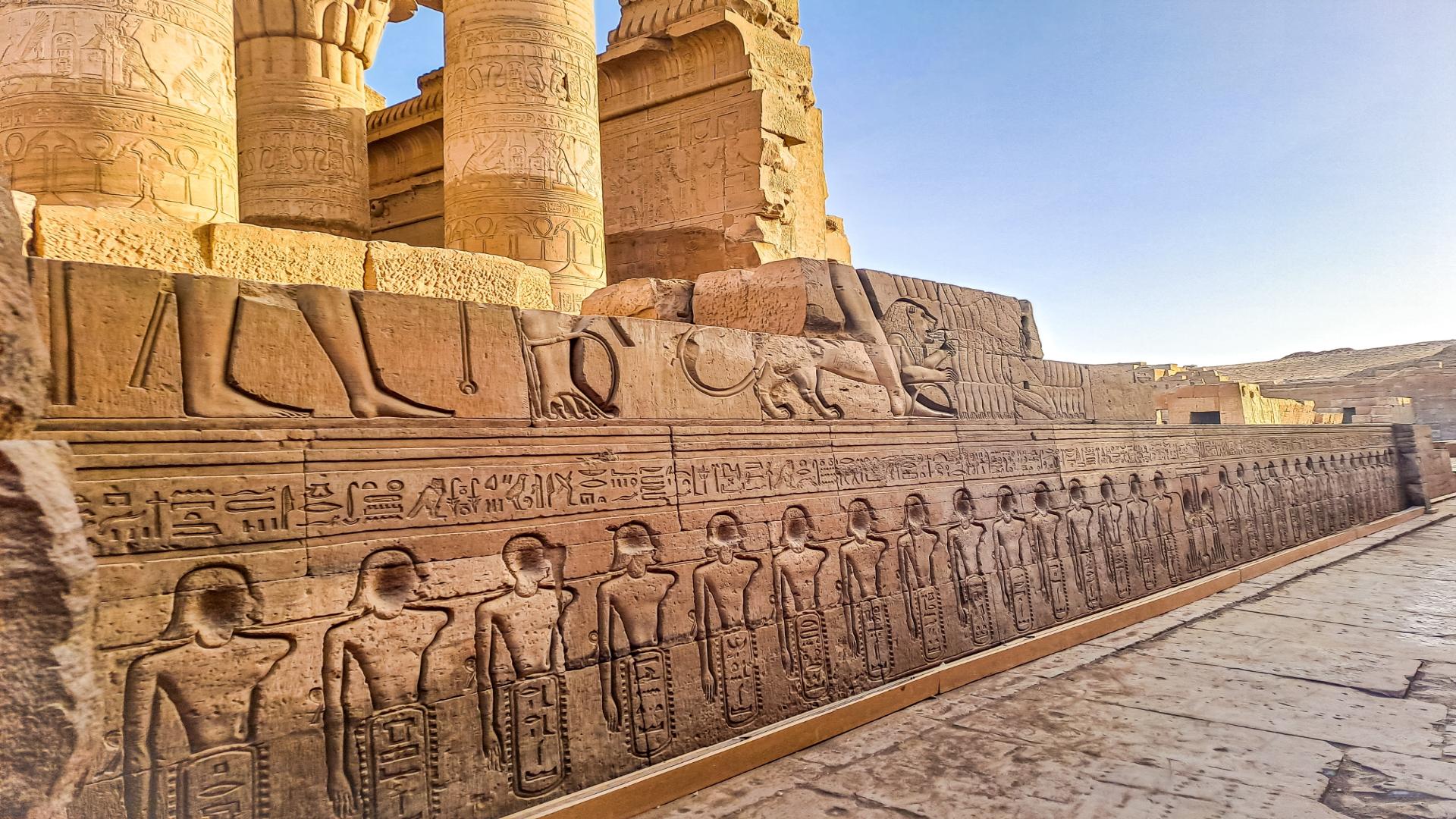
Luxor vs. Aswan: Which Ancient City Should You Visit First?
If you’re planning a trip to Egypt and wondering whether to head to Luxor or Aswan first, you’re not alone. Both cities are rich in history, packed with awe-inspiring monuments, and set along the scenic Nile River. But each offers a distinct flavor of ancient Egypt, and knowing the differences can help shape the best Egypt itinerary for you.
Discover the Majesty of Luxor Temples Egypt
Known as the “world’s greatest open-air museum,” Luxor is where ancient Egypt truly comes alive. The city is home to some of the most iconic Luxor temples Egypt has to offer:
- Karnak Temple Complex: Egypt’s vastest temple complex, a city of sanctuaries and pylons built over 2,000 years and dedicated chiefly to Amun-Ra. Its showstopper is the Great Hypostyle Hall. 134 towering papyrus-column pillars alongside grand obelisks, the Sacred Lake, and richly carved reliefs. Linked to Luxor Temple by the restored Avenue of Sphinxes, Karnak was the ceremonial heart of the Opet Festival and royal power.
- Luxor Temple: Set on the Nile in the heart of modern Luxor, the temple is dedicated to the Theban triad: Amun, Mut, and Khonsu. Begun by Amenhotep III and later completed by Tutankhamun and Horemheb, it gained its dramatic entrance under Ramesses II, with towering pylons, seated colossi, and a single standing obelisk (its twin is in Paris). Romans built a camp and chapel within the complex, and the Abu al-Haggag Mosque still rises over the ancient courtyard. Visit at sunset or after dark to see the sandstone glow and stroll across the restored Avenue of Sphinxes that reconnects Luxor Temple with Karnak.
- Valley of the Kings: The valley, where over 60 rock-cut tombs were carved for pharaohs at their final resting place, including Tutankhamun, Seti I, and Ramesses VI. Descending corridors lead to painted chambers, celestial ceilings, and scenes meant to guide the king to rebirth with the sun god. Unlike temples, the tombs were hidden for protection, which is why pigments and reliefs survive in astonishing color.
- Hatshepsut Temple: Located at Deir el-Bahari, this mortuary temple rises in three elegant terraces of colonnades and ramps set against a limestone cliff on Luxor’s West Bank. Built by the architect Senenmut and dedicated to Amun, its reliefs famously depict Hatshepsut’s divine birth and the trading expedition to Punt. Visit early in the morning for softer light on the terraces and quieter exploration.

- Madinat Habu: The mortuary temple of Ramesses III, famed as Luxor’s most prominently preserved New Kingdom complex, with pylons and hieroglyphs still holding their original color. Its reliefs depict ancient history at its finest. Battle scenes against the Sea Peoples and royal processions carved in deep, crisp sunk relief. The site also includes a small palace, chapels, and later Coptic remains, revealing centuries of reuse.
- Tombs of The Nobles: Located on Luxor’s West Bank, you can find clusters of beautifully painted rock-cut tombs for officials, priests, and artisans spread across areas like Sheikh Abd el-Qurna, el-Khokha, Qurnet Murai, Asasif, and Dra Abu el-Naga. Unlike the royal tombs’ underworld texts, these walls burst with scenes of daily life, harvests, fishing, banquets, and music.
- Valley of The Queens: On Luxor’s West Bank lies this desert valley where New Kingdom pharaohs buried royal wives, princes, and princesses. Its star is the Tomb of Nefertari, known for vibrant paintings that rank among the best-preserved art in ancient Egypt.
- The Colossi of Memnon: These are two monumental 18-meter quartzite sandstone statues of Amenhotep III that once guarded the entrance to his vast mortuary temple on Luxor’s West Bank. They survived while much of the temple vanished, becoming iconic sentinels of the Theban necropolis. After an earthquake in 27 BCE, the northern statue developed cracks that produced a mysterious “singing” tone at dawn, drawing Roman-era travelers until repairs under Septimius Severus quieted it.
- Deir El Madina: This is a preserved village of the royal artisans who carved and painted the tombs in the Valleys of the Kings and Queens. Here you can walk through mudbrick house foundations, see ostraca (sketches, letters, even jokes), and visit exquisitely painted tombs like that of Sennedjem, full of scenes of family, work, and the afterlife. The site also includes a small Ptolemaic Temple of Hathor and chapels honoring Amenhotep I and Ahmose-Nefertari.

Luxor offers grandeur and scale, ideal for travelers who want to dive deep into monumental ancient architecture and dynastic history.
Explore the Serenity of Aswan Attractions
While Luxor impresses with its scale, Aswan charms with its laid-back vibe and scenic beauty. It’s often considered the cultural heart of Nubia and a perfect place to unwind while still enjoying world-class Aswan attractions:
- Philae Temple: Dedicated to the goddess Isis, this temple was relocated piece by piece after the construction of the High Dam. Philae Temple is an island sanctuary dedicated built in the Ptolemaic and Roman periods and famous for elegant colonnades and lakeside vistas. Highlights include the monumental First Pylon, the inner sanctuaries to Isis and Osiris, and the photogenic Kiosk of Trajan poised above the Nile.
- Abu Simbel (accessible via day trip): Abu Simbel comprises two mesmerizing rock-cut temples commissioned by Ramses II; a grand sanctuary to the deified king and Ra-Horakhty, and a smaller yet iconic Temple of Hathor dedicated to Queen Nefertari. Four colossal seated figures guard the temple, while interiors glow with battle scenes (including Kadesh) and gods receiving the pharaoh. In the 1960s, both temples were dismantled and relocated stone by stone to higher ground to escape Lake Nasser’s rising waters. This was one of UNESCO’s greatest rescue feats.
- Elephantine Island: Found on the First Cataract opposite Aswan, a hub with Nubian villages and major archaeological remains. You can see the granite boulders that inspired the island’s name, the famed Nilometer used to gauge annual floods, and ruins of temples to Khnum, Satet, and Anuket near the small site museum.
- Nubian Village: Villages such as Gharb Soheil offer color-washed houses, bold geometric murals, and a warm, music-filled welcome along quiet Nile shores. Talk a walk through lanes lined with baskets, spices, beadwork, and hand-painted ceramics, then hop on a felluca ride along the nile. Many homes open small cultural rooms where you’ll hear stories of Nubian history, language, and traditions, and sample staples like dam’a stews and fresh feteer.

- Aswan High Dam & Lake Nasser: The Aswan High Dam is a modern engineering icon that tamed the Nile’s seasonal floods, generated massive hydroelectric power, and expanded year-round irrigation while creating Lake Nasser, one of the world’s largest manmade lakes stretching approximately 500 km into Sudan. The project also triggered UNESCO’s famous rescue of temples like Abu Simbel and Philae, relocated to save them from rising waters.
- Aswan Botanical Garden: Aswan Botanical Garden spreads across Kitchener’s Island, a Nile oasis planted with palms and exotic species gathered from Africa and Asia. This beautiful island is ideal for picnics or bird-spotting, with constant river views to the desert hills. You can get there by felucca or motorboat and scout a spot to be one with nature.
- The Monastery of St. Simeon: Sits on a desert ridge opposite Aswan, a huge mudbrick complex dating back to the 7th century and rebuilt around the 10th to11th centuries. Its basilica-style church, monks’ cells, and plastered passages allude to a thriving community later abandoned after raids and water shortages, leaving ruins with Nile and dune views.
- The Unfinished Obelisk: This half-carved obelisk lies in Aswan’s ancient granite quarry, offering a rare, up-close look at pharaonic stoneworking. Intended to be about 42 meters long and roughly 1,200 tons, it cracked during extraction, so workers abandoned it, perfectly preserving dolerite pounding marks and quarry trenches. Walking the site feels like stepping into a paused workshop, with clear evidence of how obelisks were shaped and levered free.
Aswan is ideal for those seeking a slower pace and a more intimate connection with the Nile.

Nile Temples Egypt: The Journey Between Luxor and Aswan
One of the most magical ways to experience both cities is by sailing between them. The Nile is lined with incredible Nile temples Egypt is famous for:
- Kom Ombo Temple: Kom Ombo is a uniquely dual temple on a Nile bend north of Aswan, dedicated to Sobek (the crocodile god) and Horus the Elder, with two mirror-image sanctuaries and twin sets of halls and chapels.
- Edfu Temple: One of the best-preserved temples in Egypt, dedicated to Horus. Beyond its towering twin pylon, you enter a shadowy hypostyle hall and relief-covered corridors that narrate Horus’s battles with Seth, royal rituals, and celestial calendars. The inner sanctuaries are home to the granite naos and the sacred barque chapel, while rooftop and courtyard scenes preserve rare festival details like the annual “Triumph of Horus.”
A Nile cruise offers the best of both worlds—luxury, relaxation, and a front-row seat to Egypt’s timeless beauty.
How to Choose for the Best Egypt Itinerary
If you’re short on time and must choose:
- Pick Luxor first if you’re interested in vast temples, royal tombs, and epic stories of Pharaohs.
- Choose Aswan first if you’re seeking peaceful vibes, cultural encounters, and lakeside tranquility.

But honestly? The real win is visiting both. They complement each other perfectly and tell two vital parts of Egypt’s ancient story.
Plan Your Journey with Galaxia
Whether you’re starting in Luxor or Aswan, let Galaxia Tours craft your dream itinerary. From private Nile cruises to guided temple tours, we’ll handle every detail—so you can focus on the magic. Let Galaxia take you on the scenic route that allows you to immerse yourself in Egypt’s history and nature.